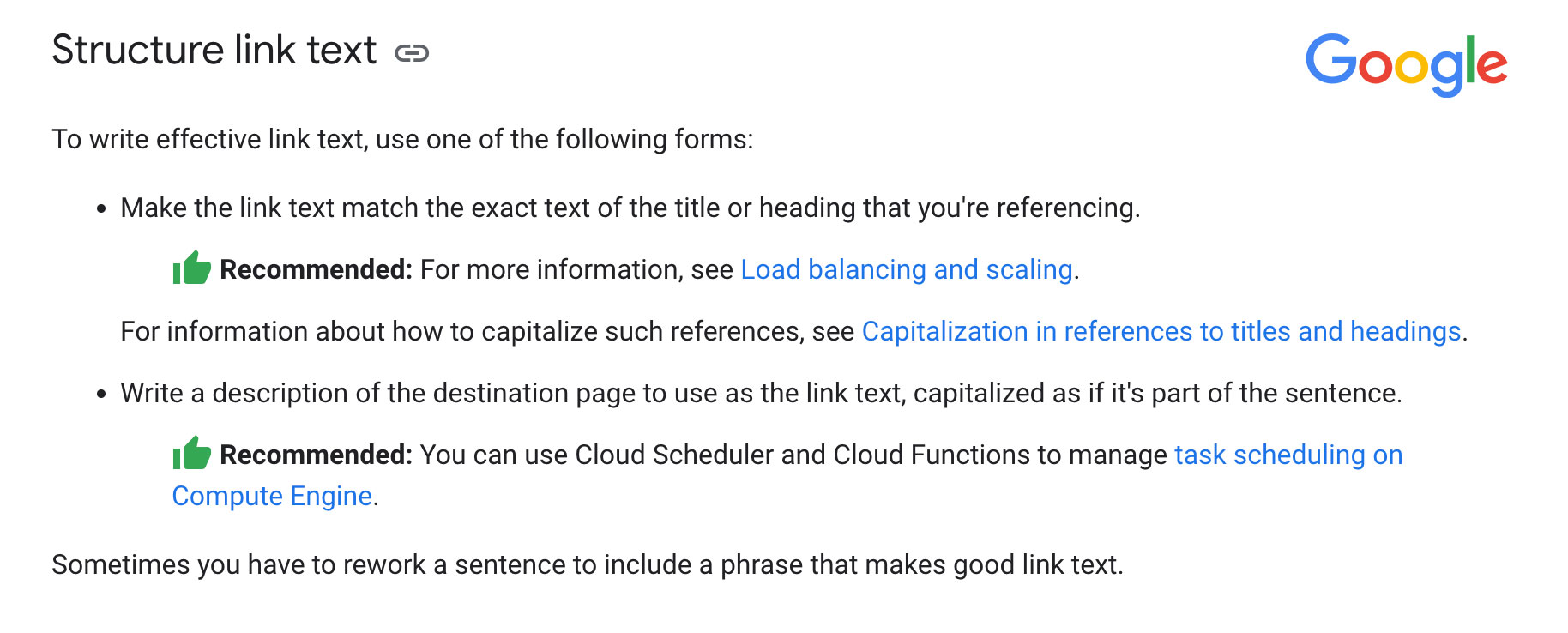Link text is the text that appears on a link when it's clicked. It's also called “clickable” or “callout” text. It is the descriptive text that goes with a link. It’s also known as anchor text, URL, or hyperlink. As the name suggests, it’s meant to be clicked on and taken somewhere else on the web—to another webpage, article, or video. You might have noticed that when you click on a link in an email newsletter or blog post, there are two words next to each other: one underlined and blue (the hyperlink) and one not underlined and black (the anchor). They are important for two reasons: first, it helps people understand what they'll find if they click on the link; second, search engines use this information when determining how relevant your content is to certain topics and queries. Link text is the text that appears in your link. If you're using a search engine query as a link, it will be the actual words Google uses in their reference to your site. For example: If you're using an anchor tag (a clickable HTML “link” that takes readers to another page), your link text will be whatever word or phrase appears inside the opening and closing HTML tags. For example: My Site Link text is the descriptive text that goes with a link. It’s also known as anchor text, URL, or hyperlink. As the name suggests, it’s meant to be clicked on and taken somewhere else on the web—to another webpage, article, or video. You might have noticed that when you click on a link in an email newsletter or blog post, there are two words next to each other: one underlined and blue (the hyperlink) and one not underlined and black (the anchor). Link text should be short but descriptive enough so that readers know where they’re going if they decide to follow through with clicking on it. The goal is to make your link text enticing. For example, if you have an email newsletter with a link that says “Sign up for our weekly newsletter” it doesn’t tell readers anything about what they’re going to get when they click on the link. Instead, try something like “Get my latest posts delivered straight to your inbox every week!” The link text should not just contain the word “click here”. This is not informative enough for screen readers or viewers. The title of your page has to be descriptive of what is offered o the users when they read through the page. The link text is the same. It should be short, but not so short that it doesn't tell the user what they can expect when they click on it. The most important thing is to make sure that the link text accurately describes what will happen when users click on it. If you are linking to another website, then use their title as your link text. This way people don't have to wonder where they're going when they click on a link. Per Google's requirement for link text structure. Example.com This is bad because it's very vague and doesn't tell users what they will find when they click on the link. Furthermore, it's obvious that the main keyword is in the link but isn't naturally flowing. For more information, see link text examples Notice how the link flows with the sentence. A Link text should be relevant to the page it is placed on, as well as its surrounding context (i.e., other links within that same content area). It should also be related to context from previous/future pages in your site hierarchy (i.e., site navigation). Link text is a powerful tool for your content marketing strategy. If you’re not using it, you should consider using it correctly on your web page. When you’re writing content, think about what words you can use to link to other pages on your site. If you’re having trouble thinking of any, here's a gem for you. On a google search page. type site:https://yourwebsite.com 'The keyword you're looking for'. The results will list all of the pages on your website that has the relevant keyword. Introduction
What is link text?
How do I use it?
Tips for writing effective link text
The text within the link should be the title of the page it's linking to or the heading.
Link text should be descriptive, but not overly wordy.
Link text should be accurate—don’t use it for keywords or keyword stuffing, which is against Google’s Quality Guidelines for External Links.

Here is an example of what not to do If the keyword for the page is Example.:
Here's an example of what you can do.
When writing link text, ask yourself: Is the keyword/phrase naturally placed in this sentence? Can I change the order of my words so that it flows more naturally? Is my link text optimized for SEO purposes? If not, can I still use it as an anchor text?Conclusion